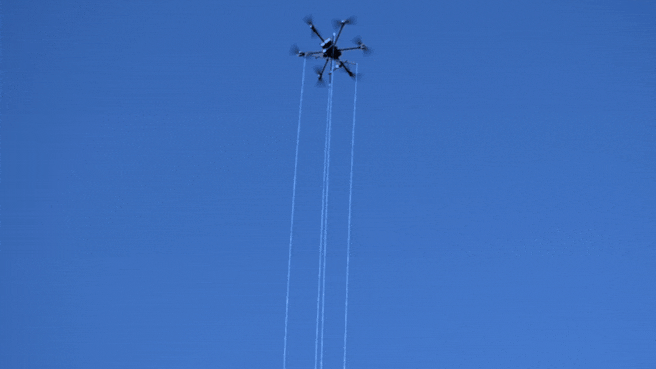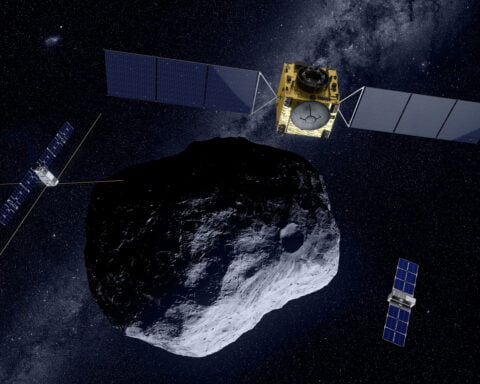The shoebox-sized Juventas will be transported to the Didymos double-asteroid system by ESA’s Hera mission. Once it flies freely in space, Juventas will deploy a cross antenna to perform a low-frequency radar scan up to 100 m deep within the smaller of the two asteroids, Dimorphos. Such low frequencies result in long wavelengths of around 6 m, too long for most indoor measurement facilities.
“To verify the antenna characteristics, we performed this aerial test with the support of the Hexapilots drone company,” notes Martin Laabs of the Chair for Radio Frequency and Photonics Engineering of Technical University Dresden in Germany.
“For the most accurate measurements of the antennas’ radiation properties, they had to be as far away as possible from other objects, so the Juventas model was hung 10 m down from the drone, which was flown up to 50 m into the sky.”
The testing allowed them to assess the amount of radiated power of the antennas compared to radio frequency modelling, and also to assess at which altitude interference from ground reflections would cut out.
TU Dresden is working on the antenna placement, amplification and performance simulation for Juventas’s radar instrument, while Astronika in Poland is constructing the antennas and EmTroniX in Luxembourg is developing the signal generation system. The overall Juventas mission is being led for ESA by GomSpace.
Juventas’s radar instrument, or JURA, is scientifically and technically overseen by Alain Hérique of France’s Institut de Planétologie et d’Astrophysique de Grenoble (IPAG) at the Université Grenoble Alpes and Dirk Plettemeier of TU Dresden.





